#beneficialinsects
Text
Ladybugs: Your Garden's Secret Superheroes


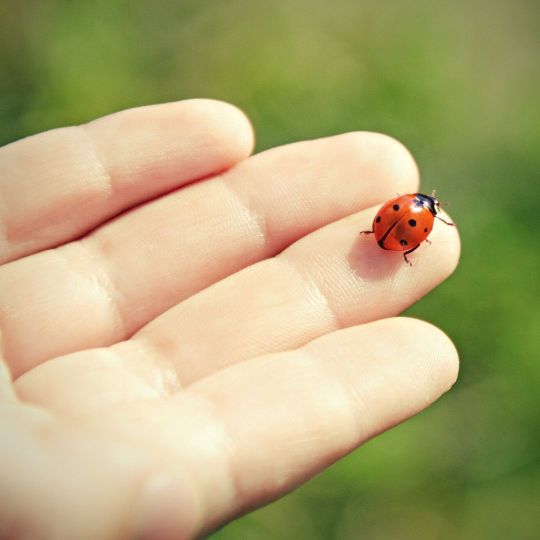
Ladybugs may be small, but don't underestimate their power!
These tiny insects are your garden's secret superheroes, feeding on harmful pests like aphids and mites that can damage your plants.
And the best part? They're completely natural pest control! Instead of relying on harmful chemicals, let these little heroes do the work for you.
Plus, they're so cute! I mean, who wouldn't want a ladybug crawling on their hand like me?
#beneficialinsects#beneficialbugs#beneficialinsect#beneficialpredators#garden#gardening#gardeningislife#gardentips#gardeningtips#garden_explorers#gardeninglove#addictedtogardening#vegetablegardening#vegetablegarden#fruitgarden#fruitsgardening#fruitgardening#ladybug#ladybuggarden#ladybugsgarden#ladybugs#gardenprotectors#pestcontrol#goodluckcharm#goodluckcharms#backyard garden#homegarden#naturalpestcontrol#superheroes#cutebugs
3 notes
·
View notes
Photo

The beautiful Hebe ‘Conquest’ coming into #flower in the #iPlantsgarden. Big #flowers! #Hebe #Hebesoc #plants #Veronica #Shrubs #gardens #evergreenshrub #perth #scotland #gardening #pollinatorplants #pollinatorgarden #pollinator #bees #butterflies #beneficialinsects (at Perth, Perth and Kinross) https://www.instagram.com/p/CgMW7a2q38I/?igshid=NGJjMDIxMWI=
#flower#iplantsgarden#flowers#hebe#hebesoc#plants#veronica#shrubs#gardens#evergreenshrub#perth#scotland#gardening#pollinatorplants#pollinatorgarden#pollinator#bees#butterflies#beneficialinsects
5 notes
·
View notes
Photo
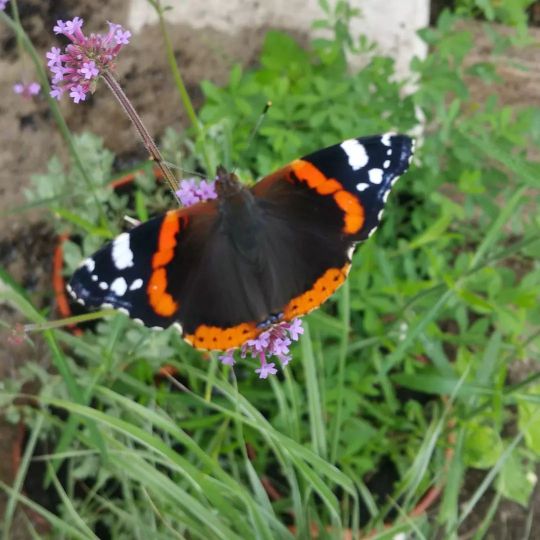
I don't know what the limit is for Verbena bonariensis and butterflies, but since 2012 I have added more verbena every year (or it adds itself, to be honest) and every year we have more and more butterflies. #butterfly #butterfliesofinstagram #mezzogiardiniere #growverbena #greengardens #verbenabonariensis #beneficialinsects #clarkanthonylawrence #sowitandgrowit #provinciadimantova #parcodelmincio #southamericanplants (at La Macchina Fissa) https://www.instagram.com/p/CeOuHXOI0ts/?igshid=NGJjMDIxMWI=
#butterfly#butterfliesofinstagram#mezzogiardiniere#growverbena#greengardens#verbenabonariensis#beneficialinsects#clarkanthonylawrence#sowitandgrowit#provinciadimantova#parcodelmincio#southamericanplants
6 notes
·
View notes
Photo

Late post #Pentaculum post - such a great time - thank you all! Amazing tin type portrait by @rivercitytintype T-shirt printing by @lupo_joseph 🤘amazing mural work by @ashton_ludden and progress on the #beneficialinsects project! A super incredible week capped off by a lunar eclipse last Sunday 🌚 @arrowmont_school Huge thanks to 2-D crew for a memorable experience: @nuveenbarwari @jenbedenbaughart @rubenbcastillo @lupo_joseph @ellyx.m @xander9210 @rivercitytintype @chicosierra @ashton_ludden https://www.instagram.com/p/Cd1m35PF5UM/?igshid=NGJjMDIxMWI=
2 notes
·
View notes
Text
"The Good, The Bad, and The Ugly: Useful and Harmful Insects in Your Garden"!
🐞🌿 Discover the beneficial allies and garden pests you might encounter and learn how to manage them effectively for a flourishing garden!
1 note
·
View note
Text
Spotting pests in garden?

Spotting pests in garden? Fear not, beneficial insects can come to the rescue! Encourage ladybugs, lacewings, and praying mantises by providing diverse plant varieties and avoiding harsh pesticides. Let nature take care of pest control for you
#BeneficialInsects#Gardening#gardening#gardenininfo#gardeningtips#gardeninginsects#yardener#yardenercare#garden#gardening tumblr#gardeninspiration#lawncare#gardener#gardening tips#gardeningcommunity
0 notes
Link
🌽 Corn flea beetles are a common pest that can cause significant damage to corn crops. These small, black beetles feed on the leaves and stems of young corn plants, which can stunt growth and reduce yields. 👨🌾 Farmers and gardeners alike need to be vigilant in controlling corn flea beetles to protect their crops. There are several effective methods for controlling these pests, including cultural practices, biological control, and chemical control. 🌱 In this article, we will explore the different pest control tips for corn flea beetles. By following these tips, you can protect your corn crops and ensure a healthy harvest.1. Understanding the Corn Flea Beetle: Identification and Life CycleThe corn flea beetle is a small, shiny black beetle that feeds on corn and other crops. Here's what you need to know about identifying and understanding its life cycle: Adult beetles emerge in the spring and feed on young corn plants. Eggs are laid in the soil near the base of corn plants. Larvae feed on corn roots and overwinter in the soil. In the spring, larvae pupate and emerge as adult beetles. Identifying the corn flea beetle is important for managing its impact on crops. Look for: Small, shiny black beetles with enlarged hind legs for jumping. Striped antennae and a distinctive yellow triangle on the thorax. Damage to corn leaves and stems, including small holes and "shotgun" patterns. Understanding the corn flea beetle's life cycle is also key to managing its impact on crops. Consider: Planting corn later in the season to avoid peak beetle emergence. Using insecticides or natural predators to control beetle populations. Rotating crops to reduce the likelihood of overwintering larvae. By identifying and understanding the corn flea beetle, farmers and gardeners can better protect their crops and ensure a successful harvest. 🌽🐞2. The Economic Impact of Corn Flea Beetle Infestations on Crops🌽 Corn flea beetle infestations can cause significant economic damage to crops. They can reduce yields by up to 50%. Infested crops may also have lower quality and market value. Growers may incur additional costs for pesticides and labor to control the infestation. 📉 The economic impact of corn flea beetle infestations can be felt not only by growers but also by consumers. Reduced yields can lead to higher prices for corn-based products. Lower quality crops may also affect the availability of certain products. 🌡️ The economic impact may also be influenced by weather conditions. Hot and dry weather can exacerbate the infestation, leading to more severe economic consequences. Conversely, cooler and wetter weather may help control the infestation. 👨🌾 Integrated pest management practices can help mitigate the economic impact of corn flea beetle infestations. These practices include crop rotation, use of resistant varieties, and timely pesticide applications. Growers can also monitor beetle populations to determine the need for control measures. 3. Natural and Chemical Pest Control Methods for Corn Flea Beetles🌱🐞 Corn flea beetles can damage crops, but there are natural and chemical methods to control them. 🌿 Natural methods include planting trap crops like radish or using beneficial insects like ladybugs. 🌻 Planting marigolds or garlic can repel beetles. 🌿 Neem oil or soap spray can control them. 💊 Chemical methods include using insecticides like carbaryl or pyrethroids. 💉 Insecticides are effective but can harm beneficial insects. 🌱 Crop rotation can reduce beetle populations. 🌽 Combining natural and chemical methods can be effective and eco-friendly. 👨🌾 Consult with a professional or follow label instructions for safe and effective pest control.4. Prevention Strategies for Corn Flea Beetle Infestations in Corn FieldsPreventing corn flea beetle infestations is crucial for maintaining healthy corn fields. Here are some effective strategies: Rotate crops to reduce pest pressure Use insect-resistant corn hybrids Plant early to avoid peak beetle activity Monitor fields regularly for signs of infestation Apply insecticides only when necessary Rotating crops helps break the pest cycle. Insect-resistant corn hybrids are genetically modified to resist pests. Planting early avoids peak beetle activity. Regular monitoring helps detect infestations early. Insecticides should be used only when there is a significant threat. Other strategies include using sticky traps to catch adult beetles and removing crop debris after harvest. These practices reduce the beetle population and prevent overwintering. By implementing these strategies, farmers can protect their corn fields from infestations and ensure a healthy harvest. 🌽🐞5. The Importance of Crop Rotation in Managing Corn Flea Beetle PopulationsCrop rotation is crucial in managing corn flea beetle populations. It reduces the number of beetles in a field by disrupting their life cycle. It also prevents the buildup of beetle populations in a single crop. Rotating crops also improves soil health and reduces pest and disease pressure. Planting non-host crops like soybeans, wheat, or alfalfa can help break the cycle. These crops do not provide a suitable environment for the beetles to thrive. Planting corn in the same field year after year can lead to a buildup of beetle populations. Rotating crops can also reduce the need for insecticides. Using insecticides repeatedly can lead to resistance in the beetle populations. Rotating crops can help reduce the need for insecticides and prevent resistance. Effective crop rotation requires careful planning and management. Growers should consider the life cycle of the corn flea beetle and the crops they plan to rotate. They should also consider the timing of planting and the use of cover crops. Crop rotation is a sustainable and effective way to manage corn flea beetle populations. 🌽🐞💪6. Monitoring and Early Detection of Corn Flea Beetles: Tips for Farmers and GardenersMonitoring and early detection of corn flea beetles are crucial for farmers and gardeners to prevent crop damage. Here are some tips: Inspect plants regularly for signs of damage, including small holes in leaves and wilting. Use yellow sticky traps to capture adult beetles and monitor their populations. Rotate crops to reduce beetle populations and prevent infestations. Apply insecticides early in the season to prevent damage. Early detection is key to preventing damage from corn flea beetles. Act quickly if you notice signs of infestation. Protect your crops with natural repellents like neem oil or garlic spray. Monitor soil moisture levels and avoid overwatering, as wet conditions can attract beetles. Consider using companion planting to deter beetles, such as planting marigolds or garlic near your crops. By following these tips, you can help prevent damage from corn flea beetles and protect your crops. 🌽🪲💻 In conclusion, the Corn Flea Beetle can cause significant damage to corn crops if left unchecked. However, there are several effective pest control methods available to farmers. Regular scouting, crop rotation, and the use of insecticides can help keep these pests at bay. Remember to always follow the instructions on insecticide labels and use protective gear when applying them. Additionally, consider using natural predators like ladybugs and lacewings to control Corn Flea Beetles. By taking these preventative measures, farmers can protect their corn crops and ensure a successful harvest. 🌽🐞 https://fleatreatment.uk/corn-flea-beetle-pest-control-tips/?_unique_id=6463ec4f69523
#Uncategorised#beneficialinsects#Cornfleabeetlecontrol#croprotation#naturalpestcontrol#organicpestcontrol#aiomatic_0
0 notes
Photo

Eupeodes americanus, the American hoverfly #backyardnature #insectsoftexas #beneficialinsects #aphideater (at Dallas, Texas) https://www.instagram.com/p/CkozMj_vR1x/?igshid=NGJjMDIxMWI=
0 notes
Photo

Hey, little dude. Welcome to the garden. #prayingmantis #beneficialinsects #garden (at Curtis Park) https://www.instagram.com/p/ChTfFJNrtTz/?igshid=NGJjMDIxMWI=
0 notes
Photo
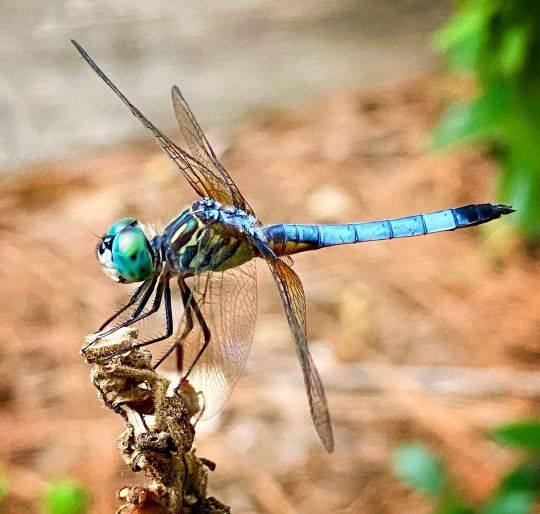
During your outdoor festivities today, be sure to thank your local Dragonflies, who besides being gorgeous, are busy working to control the mosquito population and balance out the ecosystem! . Dragonflies are over 300 million years old and some of the first winged insects to evolve. They are expert fliers and can only eat while flying -each dragonfly can consume hundreds of mosquitoes daily! . They are such astute fliers (vertical, horizontal, hovering) that robotic engineers have studied their flying abilities to try to pattern a robot that can fly like a dragonfly! . #dragonfly #dragonflies #beneficial #ecosystem #beneficialinsects #mosquitocontrol #landscaping #houstonlandscaping #outdoor #outdoors #exteriortexas https://www.instagram.com/p/CfmXvYkpt2A/?igshid=NGJjMDIxMWI=
#dragonfly#dragonflies#beneficial#ecosystem#beneficialinsects#mosquitocontrol#landscaping#houstonlandscaping#outdoor#outdoors#exteriortexas
0 notes
Text
Hoverflies: The Tiny Heroes of Your Garden
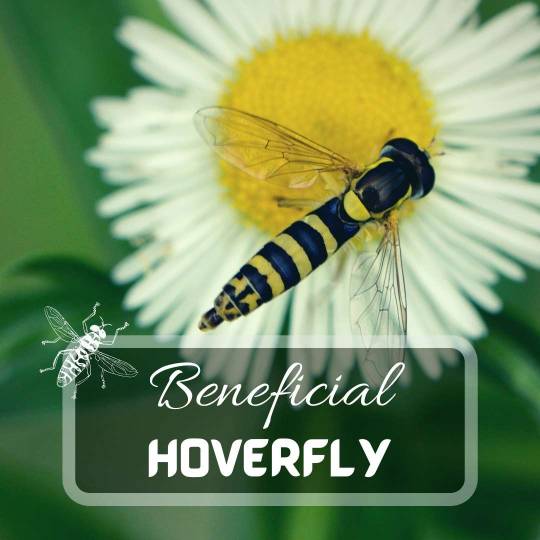
Did you know that hoverflies can be your garden's secret weapon against pests?
These small but mighty insects not only help to pollinate your plants, but their larvae are also natural predators of aphids and other harmful insects.
By welcoming hoverflies into your garden, you can reduce your reliance on chemical pesticides and create a healthier, more sustainable environment for your plants. Plus, watching these little hoverers in action can be quite mesmerizing!
So next time you see a hoverfly buzzing around your flowers, give them a little nod of appreciation. They may be tiny, but they're definitely heroes in your garden.
#hoverflies#gardenhelpers#pollinators#aphideaters#mightyinsects#garden#gardening#insects#beneficialinsects#backyardgarden#beneficialbugs#beneficialinsect#gardeningislife#gardentips#gardeningtips#garden_explorers#gardeninglove#addictedtogardening#vegetablegardening#vegetablegarden#fruitgarden#fruitsgardening#fruitgardening#gardeninglife#homegarden#backyard garden#gardening tips
2 notes
·
View notes
Photo

Gathering with the @potomacrosesociety for a lesson on spotting good and bad insects on our plants at the @smithsoniangardens Foulger rose garden. Thanks for the loupes @heather_wheatley_cph and @homesteadgardens! #gardendc #dmv #dcgardens #rosegardens #roses🌹 #rosesociety #insectpests #beneficialinsects #mydccool #picoftheday #nofilter (at Washington D.C.) https://www.instagram.com/p/Cet3CmjuEFh/?igshid=NGJjMDIxMWI=
#gardendc#dmv#dcgardens#rosegardens#roses🌹#rosesociety#insectpests#beneficialinsects#mydccool#picoftheday#nofilter
0 notes
Photo

I was about to spray the Tamarillo with a jet of water because of the Aphid infestation when I decided to get the camera out, zoom right in and see what was really going on. There were hundreds of Aphid carcasses and only a few live ones. Hmmmm though I, what's been going on? I found a few tiny, tiny wasps doing their thing. The one in the first pic seems to be making quite collection if its trophies. We mustn't anthromorphise though... In the second pic was something that I was thinking of squishing but then I caught sight of those eyes. Aphids don't look at you like that, it is more of a Mantis thing. I checked my sources and, sure thing, it is a predatory insect, a Macrolophus, one of the good guys that munches on Whitefly. Hooray for it and hooray that my squishing fingers weren't a bit faster... _________________________________________________ #pestcontrol #gardenpests #gardenpredators #beneficialinsects #insectsphotography #gardeninsects #organicpestcontrol #urbanfarming (at Gawler, South Australia) https://www.instagram.com/p/CenewqTv3J-/?igshid=NGJjMDIxMWI=
#pestcontrol#gardenpests#gardenpredators#beneficialinsects#insectsphotography#gardeninsects#organicpestcontrol#urbanfarming
0 notes
Photo
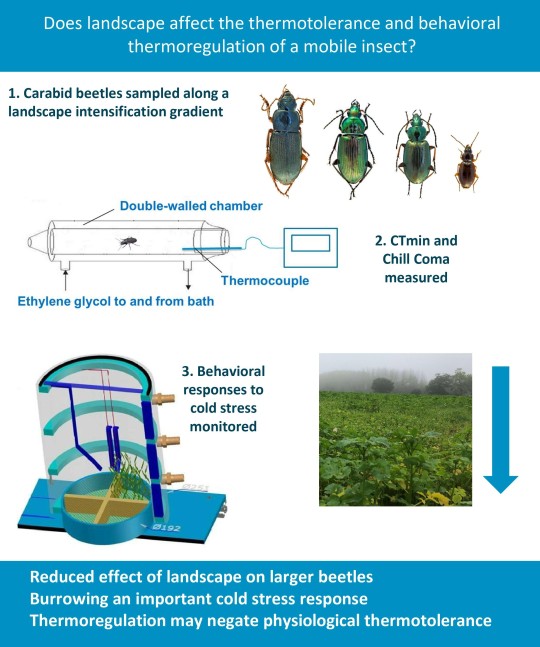
My latest paper is out in Insect Science (IF 3.605) were we studied the impact of landscape intensification on the thermal tolerance of carabid beetles and the role of behavioural thermoregulation. Results suggest that enhanced behavioural thermoregulation may impede an acclimatory response in carabid beetle thermal tolerance. Physiological mechanisms involved in thermal tolerance may not be under climate-induced selection pressures, with implications for the long-term evolutionary potential of carabid thermal tolerance. Read the full article here.
DOI: https://doi.org/10.1111/1744-7917.13044
0 notes
Text
Enjoying some free-style studio time @arrowmont_school for #pentaculum
Dusting off some unfinished work to see how far I can push it in 5 days - wish me luck!
#relief #engraving #printmaking #artistsretreat #gaitlinburg #tenneessee #smokeymountains #beneficialinsects



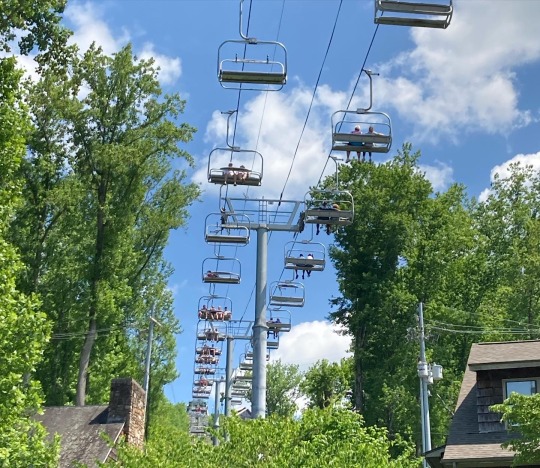
4 notes
·
View notes
Text
Identifying and Addressing the Causes of Aphids in Your Garden
Aphids tend to attack weakened plants that are already experiencing some level of stress. Therefore, it is important to identify the source of the plant's stress to prevent aphid infestations.
Some common causes of plant stress include insufficient sunlight or water, unsuitable plants for the environment, excessive fertilizer use, and pruning. The use of pesticides can also contribute to aphid problems by killing off their natural predators.
Home landscapes that host a diversity of plants and wildlife usually have a balance of beneficial insects and birds that help control aphid populations.
Read more at Yardener

#plantstress#aphidscontrol#pestmanagement#organicgardening#naturalpredators#beneficialinsects#planthealth#gardeningtips#pestcontrol#plantcare#homegardening#ecofriendly#sustainableliving#healthyplants#greenthumb#backyardgarden#greenliving#organicpestcontrol#nontoxicpestcontrol#savethebees#ecogardening#gardening tumblr
0 notes